Looking for Cast Iron Pipe Lining Services Near Me?
Eam nostrud praesent moderatius ex, ea dicant legimus dolores est. Id mei quis iudico consetetur, cu nam altera dignissim. In qui habemus propriae repudiandae, sea id principes evertitur. Vim id diam constituam. Eu sed labore reformidans. Ne euismod delectus nec, te usu wisi suscipit appetere, id brute homero ius. Lorem aliquid molestie has id, has eu vitae indoctum.
Key Takeaways
- Cast iron pipe lining is a cost-effective solution to repair and restore aging cast iron pipes.
- Common signs that indicate the need for pipe lining services include frequent clogs, slow draining sinks, recurring backups, and discolored water.
- When choosing a pipe lining service, consider factors such as experience, reputation, and customer reviews.
- The pipe lining process involves inspection and assessment of the pipes, preparation of the pipes for lining, application of the pipe lining material, and curing and testing of the lined pipes.
- The cost of cast iron pipe lining depends on factors such as the length and diameter of the pipes, the extent of damage, and the location of the pipes.
What is Cast Iron Pipe Lining?
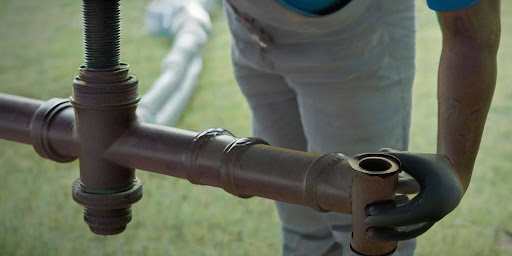
Understanding the Basics of Cast Iron Pipe Lining
Cast iron pipe lining is a revolutionary method used to repair and restore damaged or deteriorating pipelines without the need for traditional excavation and replacement. This innovative technique involves inserting a flexible and durable liner into the existing pipe, which is then coated with a specialized resin. The liner is carefully positioned to cover any cracks, leaks, or weakened areas, creating a new, seamless pipe within the old one. Here are some key points to understand about cast iron pipe lining:
- It eliminates the need for extensive digging and disruption to your property.
- The liner is designed to withstand the test of time and provide long-lasting durability.
- The specialized resin used in the process ensures a strong bond and prevents future leaks or corrosion.
- Cast iron pipe lining is a cost-effective solution compared to traditional pipe replacement.
If you’re experiencing issues with your cast iron pipes, cast iron pipe lining may be the ideal solution for restoring the functionality and longevity of your plumbing system.
How Does Cast Iron Pipe Lining Work?
Cast iron pipe lining is a revolutionary method used to repair and restore damaged or deteriorating pipelines without the need for traditional excavation and replacement. This innovative technique involves inserting a flexible and durable liner into the existing pipe, which is then coated with a specialized resin. The liner is carefully positioned to cover any cracks, leaks, or weakened areas, creating a new, seamless pipe within the old one. Here is a step-by-step overview of how cast iron pipe lining works:
- Inspection and Assessment: The first step is to thoroughly inspect the pipes to identify any issues and determine the extent of the damage.
- Preparation: The pipes are cleaned and prepared for lining, ensuring that the surface is smooth and free of debris.
- Lining: Using the existing access points, an epoxy-saturated liner with an internal bladder is pulled through the pipe and inflated to press the epoxy against the pipe wall.
- Curing and Evaluation: In just a few hours, the epoxy creates a strong and seamless “pipe within a pipe” solution. After removing the bladder, you’re left with a clean and powerful result. A final inspection is performed to ensure top-notch quality assurance.
Cast iron pipe lining offers a cost-effective and efficient solution for repairing and extending the lifespan of cast iron pipes, without the need for disruptive excavation. It provides a durable and long-lasting solution that can prevent leaks, cracks, and other common issues associated with aging cast iron pipes.
Benefits of Cast Iron Pipe Lining
Pipe lining is a growing market, and offering this service can help you attract new customers and retain existing ones. If your customers are experiencing issues like sewer odor, leaks, or recurring blockages, they may be looking for a solution that doesn’t involve excavation or major disruption to their property. Offering a trenchless pipe repair service can provide them with a cost-effective, minimally invasive solution that solves their problems quickly and adds high margin revenue to your business.
Signs You Need Cast Iron Pipe Lining Services
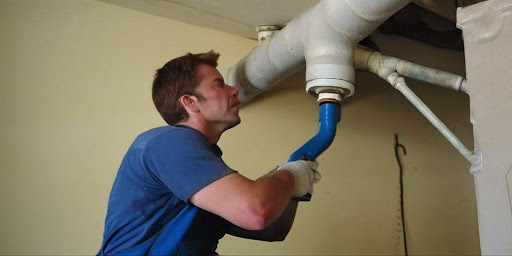
Common Issues with Cast Iron Pipes
If you’re experiencing any of the following issues with your cast iron pipes, it may be a sign that they need lining:
- Frequent clogs or blockages
- Slow-draining sinks or toilets
- Sewage backups or overflows
- Foul odors coming from drains
- Visible signs of corrosion or rust on the pipes
Ignoring these problems can lead to more serious issues down the line, such as pipe bursts or extensive water damage. It’s important to address these signs promptly and consider cast iron pipe lining as a solution.
Indications That Your Cast Iron Pipes Need Lining
There are many signs that lead to needing pipe relining. If you’ve been experiencing the following issues in your home and are looking for pipe relining near me services, it might be time to consider giving Lickety-Split a call.
- Frequent and persistent clogs or blockages in your plumbing system
- Slow-draining sinks or toilets
- Recurring backups
- Gurgling noises
- Discolored water
- Decrease in water pressure
- Foul odor in your water supply
- Cracks, leaks, or damp patches on walls, ceilings, or floors
Contact our team today to discuss your concerns and find out if pipe relining is the right solution for you.
Why You Shouldn’t Ignore Pipe Problems
Ignoring pipe problems can lead to more serious issues and costly repairs in the future. Here are some reasons why you shouldn’t ignore pipe problems:
- Recurring backups
- Gurgling noises
- Discolored water
- Decrease in water pressure
- Foul odor in your water supply
- Cracks, leaks, or damp patches on walls, ceilings, or floors
- Frequent and persistent clogs or blockages in your plumbing system
- Slow-draining sinks or toilets
If you are experiencing any of these problems, it is important to address them promptly. Ignoring pipe problems can result in further damage to your plumbing system and potentially affect the overall functionality of your home’s water supply. Contact our team today to discuss your pipe relining options and prevent further issues.
Choosing the Right Cast Iron Pipe Lining Service
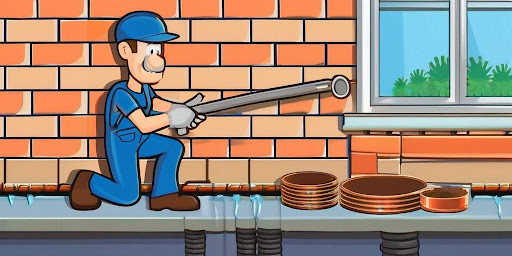
Factors to Consider When Selecting a Pipe Lining Service
When choosing a pipe lining service, there are several factors to consider. First, it’s important to ensure that the company has experience and expertise in cast iron pipe lining. Look for a service provider that specializes in trenchless pipe repair and has a proven track record of successful projects. Additionally, consider the reputation of the company and read reviews from previous customers. It’s also essential to inquire about the materials and techniques used for pipe lining. Ask about the durability and longevity of the lining material to ensure a long-lasting solution. Finally, don’t forget to compare pricing and request quotes from multiple service providers to find the best value for your money.
Qualities of a Reliable Cast Iron Pipe Lining Company
When selecting a cast iron pipe lining company, there are several qualities to look for that can help ensure a reliable and professional service.
Firstly, experience is key. A reliable company will have years of experience in the industry, with a proven track record of successful pipe lining projects. This experience allows them to handle any challenges that may arise during the process.
Secondly, a reliable company will have a team of skilled technicians who are trained in the latest pipe lining techniques. These technicians should be knowledgeable and efficient, ensuring that the pipe lining process is completed to the highest standard.
Additionally, a reliable cast iron pipe lining company will use high-quality materials and equipment. This ensures that the lining is durable and long-lasting, providing a reliable solution for your pipe problems.
Lastly, a reliable company will provide excellent customer service. They will be responsive to your needs, answer any questions you may have, and provide clear communication throughout the entire process. This level of customer service is a sign of a company that values its clients and is committed to their satisfaction.
Questions to Ask Before Hiring a Pipe Lining Service
When considering hiring a pipe lining service, it’s important to ask the right questions to ensure you’re making the best choice for your needs. Here are some key questions to ask:
- How long have you been in the pipe lining business?
- What type of pipe lining materials do you use?
- Can you provide references from previous clients?
- Do you offer any warranties or guarantees on your work?
- What is the estimated timeline for completing the pipe lining project?
- Are your technicians certified and experienced in pipe lining?
By asking these questions, you can gain a better understanding of the pipe lining service’s expertise, quality of work, and customer satisfaction.
The Cast Iron Pipe Lining Process
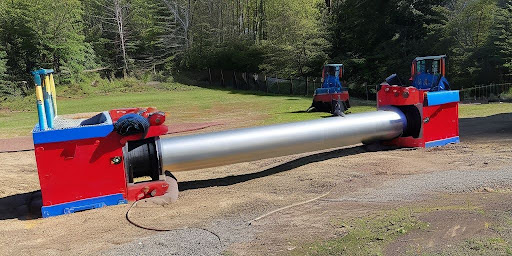
Inspection and Assessment of the Pipes
During the inspection and assessment process, a professional pipe lining service will thoroughly examine the condition of your cast iron pipes. This involves using advanced drain cameras to identify any issues such as corrosion, roots, or cracks. Based on the findings, the service provider will develop a clear plan for cleaning and lining the pipes if necessary. This step is crucial in determining the extent of the pipe damage and the appropriate course of action.
Preparation of the Pipes for Lining
Before the pipe lining process can begin, thorough preparation of the pipes is necessary. This ensures optimal adhesion and a successful lining installation. Here are the steps involved in preparing the pipes for lining:
- Inspection and Assessment: The pipes are inspected using advanced drain cameras to identify any corrosion, roots, or cracks. Based on the findings, a clear plan for cleaning and lining is developed.
- Cleaning: Exclusive tools are used to remove debris, roots, and corrosion, restoring the pipe to its original size.
- Surface Preparation: The pipe walls are thoroughly cleaned and roughened to create a suitable surface for the lining material to adhere to.
- Drying: The pipes are dried to ensure there is no moisture present, as it can affect the bonding of the lining material.
Once the pipes are properly prepared, they are ready for the application of the pipe lining material.
Application of the Pipe Lining Material
After the pipes have been thoroughly inspected and prepared, the next step in the cast iron pipe lining process is the application of the pipe lining material. This is a crucial step that involves the insertion of a flexible and durable liner coated with a specialized resin into the existing pipe. The liner is carefully positioned to cover any cracks, leaks, or weakened areas, creating a new, seamless pipe within the old one.
Here are the key steps involved in the application of the pipe lining material:
- Step 3: Lining – Using the existing access points, an epoxy-saturated liner with an internal bladder is pulled through the pipe and inflated to press the epoxy against the pipe wall.
- Step 4: Cure and Evaluation – In just a few hours, the epoxy creates a strong and seamless “pipe within a pipe” solution. After removing the bladder, you’re left with a clean and powerful result. And of course, we always perform a final inspection to ensure top-notch quality assurance.
It is important to note that the application of the pipe lining material is a highly specialized process that requires the expertise of professionals. Hiring a reliable cast iron pipe lining company ensures that the application is done correctly and effectively, resulting in a durable and long-lasting solution for your pipes.
Curing and Testing of the Lined Pipes
Once the pipe lining material has been applied, it is important to allow it to cure properly. Curing involves the hardening and strengthening of the lining material, ensuring its durability and longevity. The curing process may vary depending on the type of lining material used, but it typically involves the use of heat or UV light to accelerate the curing time.
After the lining has cured, the lined pipes undergo thorough testing to ensure their integrity and functionality. This testing may involve pressure testing to check for any leaks or weaknesses in the lined pipes. It is crucial to conduct these tests to ensure that the lined pipes are in optimal condition and can withstand the demands of everyday use.
Cost of Cast Iron Pipe Lining
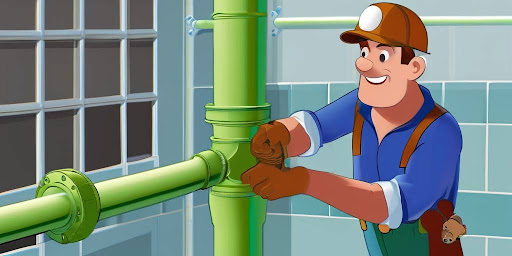
Factors Affecting the Cost of Pipe Lining
Offering a trenchless pipe repair service can provide customers with a cost-effective, minimally invasive solution that solves their problems quickly. This can add high-margin revenue to your business. Pipe lining is growing in popularity, and offering this service can help you attract new customers and retain existing ones. If your customers are experiencing issues like sewer odor, leaks, or recurring blockages, they may be looking for a solution that doesn’t involve excavation or major disruption to their property. Why pass these opportunities off to excavators or another lining company?
Comparing the Cost of Pipe Lining vs. Pipe Replacement
When it comes to repairing damaged or deteriorating pipes, homeowners often face the decision between pipe lining and pipe replacement. While both options have their advantages, it’s important to consider the cost implications. Here are a few key points to keep in mind when comparing the cost of pipe lining and pipe replacement:
- Pipe lining is generally more cost-effective than pipe replacement, especially when considering the additional expenses of excavation and property restoration.
- Pipe lining eliminates the need for extensive digging and disruption, resulting in lower labor costs.
- Pipe replacement may require permits and inspections, adding to the overall cost.
- Pipe lining can be completed in a shorter timeframe, reducing the inconvenience and potential additional expenses associated with prolonged construction.
Considering these factors, it’s clear that pipe lining offers a more affordable solution for homeowners in need of pipe repairs.
Getting an Accurate Quote for Pipe Lining Services
When seeking a quote for pipe lining services, it’s important to provide accurate information about your specific needs. Here are some tips to help you get an accurate quote:
- Provide detailed information about the condition of your pipes, including any known issues or previous repairs.
- Specify the length and diameter of the pipes that need lining.
- Describe the location of the pipes, whether they are underground or accessible through walls.
- Mention any specific requirements or preferences you have for the lining material.
By providing this information, you can ensure that the quote you receive is tailored to your unique situation and that there are no surprises later on.
Benefits of Cast Iron Pipe Lining
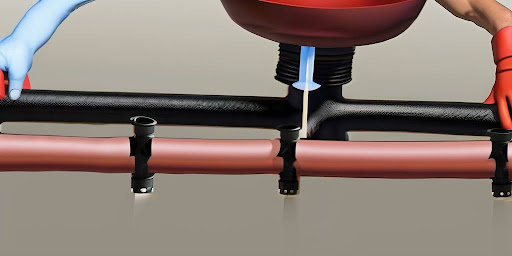
Longevity and Durability of Lined Pipes
When cast iron pipes are lined with a durable and flexible liner, they gain superior structural repair with strength that surpasses that of unlined pipes. The lining creates a new, seamless pipe within the old one, covering any cracks, leaks, or weakened areas. This innovative pipe relining method extends the lifespan of the plumbing system, offering a cost-effective and long-lasting solution. Lined pipes can withstand the test of time and provide reliable performance for years to come.
Improved Flow and Functionality
When you choose cast iron pipe lining services, you can expect improved flow and functionality in your plumbing system. The lining material smooths out the interior of the pipes, reducing friction and allowing water and waste to flow more freely. This can help prevent clogs and backups, ensuring that your plumbing system operates efficiently.
Additionally, cast iron pipe lining can help restore the original diameter of the pipes. Over time, cast iron pipes can become corroded and develop scale buildup, which can restrict the flow of water. By lining the pipes, you can remove these obstructions and restore the full capacity of your plumbing system.
With improved flow and functionality, you can enjoy a reliable and efficient plumbing system that meets your needs.
Environmentally Friendly Solution
Cast iron pipe lining is not only a cost-effective solution for repairing damaged pipes, but it is also an environmentally friendly option. By choosing pipe lining over pipe replacement, you can help reduce waste and minimize the environmental impact. Here are some reasons why cast iron pipe lining is an environmentally friendly solution:
- Preservation of Existing Pipes: Pipe lining allows you to preserve the existing cast iron pipes by reinforcing them with durable lining material. This eliminates the need to remove and replace the entire pipe, reducing the amount of waste generated.
- Reduced Energy Consumption: The process of pipe lining requires less energy compared to pipe replacement. This means that less energy is consumed during the repair process, resulting in a smaller carbon footprint.
- Minimized Disruption to the Environment: Pipe lining is a non-invasive method that does not require extensive excavation or disruption to the surrounding environment. This helps to minimize the disturbance to the ecosystem and reduce the impact on wildlife.
- Longevity and Durability: Cast iron pipe lining provides a long-lasting solution, extending the lifespan of the pipes. This reduces the need for frequent repairs or replacements, further reducing waste and environmental impact.
By choosing cast iron pipe lining, you can not only save costs but also contribute to a more sustainable and environmentally friendly solution for your pipe repair needs.
Frequently Asked Questions about Cast Iron Pipe Lining
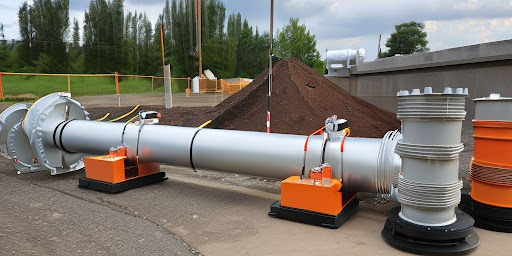
How long does cast iron pipe lining last?
Cast iron pipe lining can last for several decades, providing a long-term solution for deteriorating pipes. The lifespan of the lining can vary depending on factors such as the quality of the materials used, the condition of the original pipe, and the maintenance of the plumbing system. However, with proper installation and regular maintenance, cast iron pipe lining can typically last 50 years or more.
Here are some key points about the longevity of cast iron pipe lining:
- Cast iron pipe lining is designed to be a durable and reliable solution for aging pipes.
- The lining material used, such as epoxy or cured-in-place pipe lining, is resistant to corrosion and can withstand the test of time.
- Regular inspections and maintenance can help identify any issues early on and extend the lifespan of the lining.
It’s important to consult with a professional pipe lining service to assess the condition of your pipes and determine the best course of action for your specific situation.
Can all types of cast iron pipes be lined?
Yes, cast iron pipe lining can be performed on various types of cast iron pipes, including hubless pipes, bell and spigot pipes, and even pipes with bends and offsets. The lining process is flexible and can adapt to different pipe configurations, making it a versatile solution for pipe rehabilitation. However, it is important to consult with a professional pipe lining service to determine the suitability of your specific pipes for lining.
Is cast iron pipe lining a permanent solution?
Yes, cast iron pipe lining is considered a permanent solution for repairing and restoring damaged or deteriorating pipelines. The innovative technique of pipe lining involves inserting a flexible and durable liner into the existing pipe, which is then coated with a specialized resin. This creates a new, seamless pipe within the old one, covering any cracks, leaks, or weakened areas. The epoxy-saturated liner forms a strong and durable bond with the pipe wall, ensuring long-lasting performance.
Benefits of cast iron pipe lining:
- Extends the lifespan of the pipes
- Restores proper flow and functionality
- Minimizes the risk of future pipe failures
- Avoids the need for costly and disruptive excavation
With proper installation and regular maintenance, cast iron pipe lining can provide a reliable and durable solution for many years to come.
Are you tired of dealing with old, corroded pipes? Do you want a long-lasting solution that doesn’t require digging up your entire property? Look no further than Viking Sewer Rehab! We specialize in cast iron pipe lining, a revolutionary method that restores the integrity of your pipes without the need for costly and disruptive excavation. Our team of experts uses state-of-the-art technology to insert a seamless liner into your existing pipes, creating a durable and corrosion-resistant barrier. With our cast iron pipe lining service, you can say goodbye to leaks, blockages, and costly repairs. Contact us today to schedule an appointment and experience the benefits of cast iron pipe lining for yourself.

